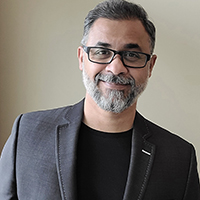The days of limited warranties may be numbered, as an increasing number of manufacturers turn to a new business model: servitization.
Servitization does more than bring service to product manufacturing. For example, Xerox has offered equipment maintenance and repair through service agreements for decades.
What it hasn’t done until recently, however, is base those agreements on equipment performance and output rather than repair frequency. Today, its Intelligent Workspace Services aim to partner with customers on goals like productivity, sustainability, and security.
This shifts focus away from product maintenance to customer relationship management and partnership. And with the advent of the Internet of Things (IoT) and intelligent apps, this new direction opens opportunities for preventative maintenance and deeper insights, thanks to data.
Consumers today use data to find the most convenient, effective solutions to their problems. They expect their products to do the same. With the rise of subscription businesses, connectivity, and real-time information, manufacturers need to pivot to meet heightened expectations for lifelong service support.
Servitization promises customers complete, long-lasting solutions. It also promises manufacturers recurring revenue, higher customer retention, and more opportunity to gather customer data as the market enters an IoT revolution.
The IoT and How Manufacturers Are Rethinking Their Business Model
As businesses evolve toward customer centricity, old models fall to the wayside. Particularly in the case of machines, the large up-front cost and investment in a product that may fail someday makes leasing more attractive. However, manufacturers who lease often lose when machines are worn out or damaged before producing a profit.
Servitization seeks to rectify this problem, creating a win-win for customers and manufacturers. The IoT helps. By tapping into data from installed sensors, manufacturers predict machine needs before they require repair—like changing a well-worn belt before it breaks, for example.
This reduces the chance of greater damage to the machine and also increases productivity for the customer. The time it takes to change a worn belt, after all, is likely less than the time it takes to report an inoperable machine, schedule a repair, assess damage, and wait for additional parts to become available.
Manufacturers also gain an increasingly valuable asset through IoT sensors: data. When leveraged, this information informs everything from product development to marketing based on customer usage. This requires a viewpoint shift for manufacturers, from products as units and costs to lifetime performance and customer relationships.
Servitization in Manufacturing Today
IoT data’s potential to grow recurring revenue over time—and the business security that comes along with it—makes servitization an attractive business model for manufacturers in many industries:
Marine and Aerospace.
In 2017, Rolls-Royce and Nor Lines signed a groundbreaking service agreement called “Power-by-the-Hour” for two marine vessels. This agreement builds on “Rolls-Royce’s many years of experience with equipment monitoring, proactive servicing and available solutions in the aerospace market.”
The agreement “harnesses the power of ‘Big Data’ to monitor, plan and perform maintenance and repairs on all equipment it has installed on the cargo vessels,” which is a completely new service from Rolls-Royce Marine, according to a press release from the company. With the agreement, “Nor Lines is handing responsibility for service planning and performance back to the equipment’s supplier, Rolls-Royce. Nor Lines pays a fixed charge per hour of operation, per ship. Rolls-Royce will monitor the equipment aboard each vessel from on shore through the use of onboard sensors.”
The “Power-by-the-Hour” service has existed for decades, offering subscription-like service for airlines using Rolls-Royce engines. Essentially, customers pay for an engine’s power, or output, rather than for the engine itself. The power enables an airline or marine shipper to operate. Rolls-Royce takes on the responsibility of monitoring and ensuring its product delivers that power.
This model may soon inform vehicle manufacturers’ business models as telematics enable new innovations in rideshare, self-driving cars, and various vehicle-centered industries. Telematics is a synthesis of communications, engineering, computer science, and vehicles capable of storing, sending, and receiving data. This data can be used to remotely track and even control moving vehicles, positioning telematics as an influential factor in servitization’s future.
Shipping and Transportation.
Telematics also brings significant changes to shipping and transportation. MAN Truck & Bus fleet manager David Lester, for example, bases his delivery services on a pence-per-kilometer business model.
“All our customers want to do is ship product from A to B; they don’t really care whether it’s on our truck or somebody else’s,” he explains.
This refocuses pricing on outcome rather than equipment. As shipping is ultimately a service, it makes sense to servitize the manufactured products that help execute the service, rather than charge based on equipment usage, maintenance, and so on.
With recurring revenue generated by this per-kilometer servitization, fleet managers can also budget for IoT sensors and telematics to provide premium services such as real-time shipment tracking and special handling of fragile shipments.
Healthcare.
GE Healthcare—recognizing the significant cost of purchasing and installing medical equipment such as MRI machines—also uses a servitization model. The electric giant provides remote monitoring via IoT sensors, equipment maintenance, and consultations for whole-hospital budgeting and outfitting of machines.
Pharmaceutical companies too are taking note of patients’ desire to not need medications in the first place, repositioning themselves as healthcare solution providers. With apps and programs centered around health monitoring through IoT wearables, for example, they bring business and the customer together in the effort toward a healthier life.
Energy Efficiency and Sustainability.
GE hasn’t limited servitization opportunities to healthcare. Its Predix Platform leverages IoT capabilities to “run, scale, and extend digital industrial solutions.” This means GE can do things like predict when turbines and generators need repair, ensuring power plants run efficiently.
In an innovative lighting-as-a-service model, Philips and Amsterdam’s Schiphol Airport entered a service agreement centered around the provision of performance and durability for an LED lighting system, rather than for the lights themselves. Energy-efficient LED lamps have helped the airport reduce electricity used for lighting by 50%.
The high cost of equipment such as solar panels is also alleviated through servitization, making energy efficiency available to customers who otherwise may not have the necessary capital.
When the goal is energy efficiency or sustainability delivered through products, both manufacturers and customers benefit from the IoT.
IoT lighting fixtures, for example, monitor efficiency and inform the development of ever-better solutions.
Agriculture.
Weed-removing, fruit-picking, and more are being assigned to IoT-enabled agribots which gather data on everything from yield to soil quality. While large farming operations have already automated for the most part, smaller family-run farms often struggle to meet the upfront costs of advanced equipment.
Enter servitization. Farmers are familiar with leasing harvesting equipment, so extending the idea to year-round data-gathering equipment that could improve operations may not be far-fetched.
Agribots are complex, expensive machines. A subscription-like servitization contract ensures regular maintenance and servicing for the farmer, and recurring revenue for the manufacturer.
Construction.
Heavy equipment, unsurprisingly, is quite expensive and requires maintenance to operate safely. These machines are already equipped with sensors to monitor location, weight load, engine temperature, and fluid levels like many other vehicles. Developments in size, capability, and affordability of IoT sensors opens new servitization possibilities.
Heavy equipment is often leased as needed from heavy equipment businesses. With new sensors detecting operational performance, efficiency, and operator adherence to safety protocols, these businesses can begin to monetize their machine production rather than the machines themselves.
They can even increase safety by using sensors to prevent exceeding weight and speed limits, load distribution, and rate of incline, reducing the chances of accidents and damage on the customer’s job site.
Optimizing Servitization Requires Robust Billing Software Capable of Handling Data
Servitization models which redirect monetization from product to service require more complex billing. Usage data plays an integral role in the servitization billing process. Usage-based billing models, such as the per-kilometer, per-hour, and per-outcome models described above, generate large amounts of fluctuating data. This demands a flexible recurring billing platform capable of converting this usage data into invoices—even in situations requiring hybrid pricing.
Leveraging servitization to make high-cost, critical machinery and products more accessible requires adaptive recurring billing software. These agile software can seamlessly bill and invoice based on data gathered by manufacturers’ IoT and telematics devices, resolving billing challenges through the IoT manufacturer-reseller ecosystem.
Robust recurring billing platforms such as Stax Bill offer the automation, security, and scalability necessary for servitization businesses. These adaptive platforms help manufacturing businesses harness the financial security of recurring revenue and the customer retention rate of subscription-like service agreements.
Are traditional manufacturer business models dead?
For now, servitization is best for manufacturers of products with high initial costs that require regular servicing. Aviation, medical, construction, and other mechanical equipment manufacturers have already begun to tap into the power of IoT-enabled machines.
As consumer expectations change, it won’t be long before they demand the connectivity and real-time responsiveness IoT technology provides. Manufacturers of all sizes must brace for the Big Data wave and the changes it will bring.








